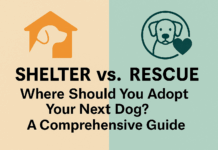Last Updated on March 10, 2022 by Dogs Vets
What can I give my dog for anxiety?
Dogs and other pets going through stress and anxiety issues are normal. Like we humans, dogs and other pets can be stressed too. And signs can be sometimes too subtle to notice.
It just stops the dogs from performing regular activities. And as dogs can’t show their inner feelings and emotions so they show some odd behaviors which are not usual.
Dogs express the change in their behavior, their stress, fears, and other issues.
Therefore, it is important to know how to identify the signs of stress and what one can do to relieve it.
There are a plethora of things and gears created in regards to dogs and their needs. Gears and tools help to soothe a dog’s anxiety and stress.
Some of the best instruments you can easily USE to aid dogs’ anxiety are:
Comfy Bed
Who doesn’t love a cozy and comfortable bed? Nothing can relax and calm a dog like a comfortable bed on which they can lay anytime. Sometimes all you can do is to create a safe space and environment for them to feel secure and safe.
A calming bed for dogs provides that space to them, it has a raised rim that creates a barrier between the dog and the outside world, so they can easily snuggle in and relieve their mind.
Buying a dog bed is one of the most rightful decisions you as a dog owner can make for your dog.
ThunderShirt
A ThunderShirt is also one of the easiest, safest solutions to try for your dog’s separation anxiety or stress. Thundershirt offers a gentle and mild constant pressure to calm the dogs. It acts as a pressure wrapper for anxious dogs.
Even dog trainers also recommend wearing the thunder shirt who constantly suffer from anxiety issues.
Even during any fireworks or thunderstorm, they act as the best support system for them. It is made up of soft fabric which is washable and gives a restful hug across their body.
Calming Chews
Using organic ingredients and treats can really relieve their anxiety and stress. There are many benefits of calming chews and sticks including better mental and physical wellbeing, dental health, and bone health.
Dogs love to chew and it is highly beneficial for pups, these calming chews can be best for their overall health and mental behavior.
Chewing these can be an awesome way to keep their mind and body occupied in a healthy way which gives them mental stimulation.
Aromatherapy or essential oils
Applying essential oils is another alternative method to calm dogs from anxiety.
Using lightly diffused essential oils and giving them a soothing massage can give them a whole different vibe.
CBD oil is believed to be great in such cases. CBD eventually helps in coping with stress and makes the dog calmer and better.
The growth of the CBD healthcare sector is rising dramatically day by day. But sometimes it becomes hard for dog owners to find the right combination of oil for their dogs. Here, with regard to CBD oils, this piece Healthcanal.com/health/best-cbd-oil-dogs features the best guide and oils for dogs according to their necessities.
Calming spray
As every dog is different thus different strategies work for different dogs. And due to this, dog owners sometimes feel overwhelmed. So, dog sprays or pheromones can be considered another alternative and safest option.
Pet calming sprays help the dogs and other pets to ease their anxiety and aggressive behavior.
Furthermore, there are no reports of side effects till now. They are fast-acting and unscented sprays that promote healthy energy balance and calmness during intense stress situations for aged dogs and pups.
Medications
When all the above traditional and herbal methods fail, it’s better to opt for medications. But before treating any dog with medication it’s better to consult a veterinarian.
There are multiple products and medicines that help to ease out anxiety and have long-term benefits. They are also more beneficial in separation anxiety and situational-related anxiety.
Dog’s medications during anxiety can be a bit tricky to understand, one should always take the prescription and dosage of a veterinarian.
Other proven benefits of mediation include better cardiovascular health, gut health, better physical and mental well-being.
Dog anxiety may be a common issue, but there are multiple ways to combat it and help them. It’s the least we can do for pets who give us so much in return.
There can be tons of reasons for anxiety and stress but it’s more important to notice their symptoms and take action.
Kathy Shattler, MS, BS, RDN is sure about the fact that long-term anxiety can be detrimental to a dog’s health and if left untreated it can lead to behavioral and other chronic issues.
Occasionally, dogs cannot ease out or cope well with anxiousness in daily life. If that is the case it is more advisable to consult a veterinary behaviorist or a well-experienced trainer.
Facts Check:
We hope you enjoyed this article… What are your thoughts on What can I give my dog for anxiety?
Рleаse let us knоw yоur thоughts in the соmments seсtiоn. Feel free to share with us in the comments section below

















